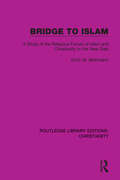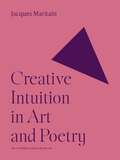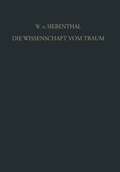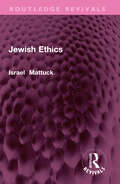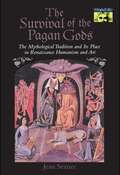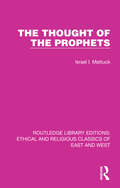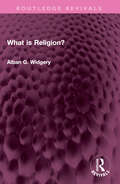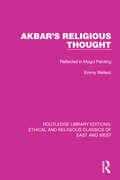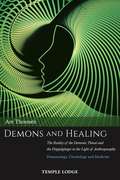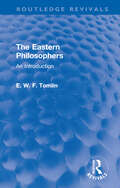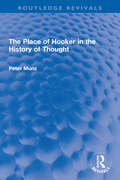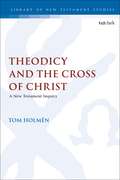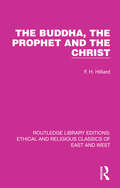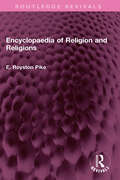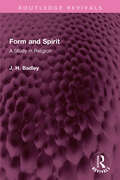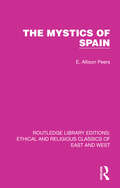- Table View
- List View
Bridge to Islam: A Study of the Religious Forces of Islam and Christianity in the Near East
by Erich W. BethmannOriginally published in 1953, Bridge to Islam is a detailed study of the beliefs of Muhammad and his followers, exploring the relationship between the world of Islam and that of Christianity. Drawing attention to the common beliefs between Islam and Christianity, the book examines the relationship between these two prominent religions and poses the argument that it is only through a proper appreciation of the differences in spiritual attitudes that a bridge of understanding and knowledge can be built between them. It traces the religious histories of different countries in the Middle East and assesses the position of Islam and Christianity in each one. Bridge to Islam will appeal to those with an interest in the history of Christianity, the history of Islam, religious studies, and the Middle East.
Creative Intuition in Art and Poetry (The A. W. Mellon Lectures in the Fine Arts #1)
by Jacques MaritainThe classic work on the sublime interplay between the arts and poeticsThis book explores the rich and complex relationship between art and poetry, shedding invaluable light on what makes each art form unique yet wholly interdependent. Jacques Maritain insists on the part played by the intellect as well as the imagination, showing how poetry has its source in the preconceptual activity of the rational mind. As Maritain argues, intellect is not merely logical and conceptual reason. Rather, it carries on an exceedingly more profound and obscure life, one that is revealed to us as we seek to penetrate the hidden recesses of poetic and artistic activity. Incisive and authoritative, this illuminating book is the product of a lifelong reflection on the meaning of artistic expression in all its varied forms.
Die Wissenschaft vom Traum Ergebnisse und Probleme: Eine Einführung in die Allgemeinen Grundlagen
by Wolf von SiebenthalJewish Ethics (Routledge Revivals)
by Israel I. MattuckFirst published in 1953 Jewish Ethics presents a systematic account of ethics in Judaism. The main sources for a study of Jewish ethics are the Bible and Talmud. Rabbi Israel Mattuck discusses themes like theory of Jewish ethics; man and his moral freedom; ethical element in messianism; guides to righteousness; justice and love; truth and peace; social ethics; the judgment on war; ideas of marriage, family and divorce; and asceticism and the good life, without getting into comparisons between ethics of Judaism and of other religions. This compact book is a must read for scholars of Judaism, religion, and history of Judaism.
Jewish Ethics (Routledge Revivals)
by Israel I. MattuckFirst published in 1953 Jewish Ethics presents a systematic account of ethics in Judaism. The main sources for a study of Jewish ethics are the Bible and Talmud. Rabbi Israel Mattuck discusses themes like theory of Jewish ethics; man and his moral freedom; ethical element in messianism; guides to righteousness; justice and love; truth and peace; social ethics; the judgment on war; ideas of marriage, family and divorce; and asceticism and the good life, without getting into comparisons between ethics of Judaism and of other religions. This compact book is a must read for scholars of Judaism, religion, and history of Judaism.
The Survival of the Pagan Gods: The Mythological Tradition and Its Place in Renaissance Humanism and Art (Mythos: The Princeton/Bollingen Series in World Mythology #4)
by Jean SeznecThe gods of Olympus died with the advent of Christianity--or so we have been taught to believe. But how are we to account for their tremendous popularity during the Renaissance? This illustrated book, now reprinted in a new, larger paperback format, offers the general reader first a discussion of mythology in late antiquity and the Middle Ages, and then a multifaceted look at the far-reaching role played by mythology in Renaissance intellectual and emotional life.
The Thought of the Prophets (Ethical and Religious Classics of East and West #5)
by Israel I. MattuckOriginally published in 1953, The Hebrew Prophets’ conception of the meaning and purpose of human history has considerable significance for a religious view of the world situation in the middle of the 20th Century. This book discusses the nature of the Hebrew prophets and the grounds for their claim to inspiration. He then examines the fundamental and universal religious ideas underlying their pronouncements. Particular attention is paid to their views on the basis of human morals, the character of the good society, the duties of government and the relation between religion and politics. Other chapters deal with their ideas of true religion and of the relation of God to human life.
The Thought of the Prophets (Ethical and Religious Classics of East and West #5)
by Israel I. MattuckOriginally published in 1953, The Hebrew Prophets’ conception of the meaning and purpose of human history has considerable significance for a religious view of the world situation in the middle of the 20th Century. This book discusses the nature of the Hebrew prophets and the grounds for their claim to inspiration. He then examines the fundamental and universal religious ideas underlying their pronouncements. Particular attention is paid to their views on the basis of human morals, the character of the good society, the duties of government and the relation between religion and politics. Other chapters deal with their ideas of true religion and of the relation of God to human life.
What is Religion? (Routledge Revivals)
by Alban G. WidgeryFirst Published in 1953 What is Religion provides an understanding of religious faith which embraces all of the great and enduring religions. In the process it strips off the irrelevant and inconsequential which every religion accumulates in the course of time, and gets in back of rigid formulations of faith to the primary experiences of the single religious man. Through its detailed consideration of world faiths runs an appealing and consistent philosophy of religion for everyman. Alban Widgery’s aim throughout is constructive, with the purpose of showing religion as supreme in life and of defending its beliefs against forms of antireligious thought. He maintains that the view he presents is more true of religion as it has been in history and also to the general conditions of mankind. This book is a must read for scholars and researchers of philosophy of religion and religion in general.
What is Religion? (Routledge Revivals)
by Alban G. WidgeryFirst Published in 1953 What is Religion provides an understanding of religious faith which embraces all of the great and enduring religions. In the process it strips off the irrelevant and inconsequential which every religion accumulates in the course of time, and gets in back of rigid formulations of faith to the primary experiences of the single religious man. Through its detailed consideration of world faiths runs an appealing and consistent philosophy of religion for everyman. Alban Widgery’s aim throughout is constructive, with the purpose of showing religion as supreme in life and of defending its beliefs against forms of antireligious thought. He maintains that the view he presents is more true of religion as it has been in history and also to the general conditions of mankind. This book is a must read for scholars and researchers of philosophy of religion and religion in general.
Akbar's Religious Thought: Reflected in Mogul Painting (Ethical and Religious Classics of East and West #9)
by Emmy WelleszOriginally published in 1952, the first part of this book gives a portrait of Akbar (1542-1605), Emperor of India, not as a War Lord and Empire Builder, but as a man deeply absorbed in questions of the Spirit. It follows him in his quest after the various religions professed in India and the doctrines of the Christian faith. The text is illustrated by numerous reproductions of contemporary miniatures. Their style which, under Akbar’s inspiring patronage, resulted from the collaboration of Muslim and Hindu artists who became acquainted with European paintings, reflects the universality of the Emperor’s mind. The second part of the book is concerned with the rise and development of this style.
Akbar's Religious Thought: Reflected in Mogul Painting (Ethical and Religious Classics of East and West #9)
by Emmy WelleszOriginally published in 1952, the first part of this book gives a portrait of Akbar (1542-1605), Emperor of India, not as a War Lord and Empire Builder, but as a man deeply absorbed in questions of the Spirit. It follows him in his quest after the various religions professed in India and the doctrines of the Christian faith. The text is illustrated by numerous reproductions of contemporary miniatures. Their style which, under Akbar’s inspiring patronage, resulted from the collaboration of Muslim and Hindu artists who became acquainted with European paintings, reflects the universality of the Emperor’s mind. The second part of the book is concerned with the rise and development of this style.
Demons and Healing: The Reality of the Demonic Threat and the Doppelgänger in the Light of Anthroposophy: Demonology, Christology and Medicine
by Are Thoresen‘Genius is a rare commodity that few of us attain. I see the colour-magic painted by Van Gogh, hear the music-magic of Beethoven, imagine touching the exquisite bronze of Rodin’s Thinker. I revere their work but know that I can never create such beauty. So it is with Are’s psychic skills.’ – Phil Rogers, MRCVS, Dublin‘Today we have forgotten all about demons and even about Christ. Both concepts have become anachronisms from olden times. That they are not anachronisms is illustrated in the discussions and examples given in this book.’ – Hans Kolstad, Dr.philos., MAS, NorwayAre Thoresen perceives demons and other spiritual beings as clearly as we see each other. He sees the demons that cause disease as well as the beings associated with medicinal plants and other substances that can promote health. He has witnessed how demons of disease leave the bodies of the sick and enter the healthy, thus causing contagion. Through his therapeutic work, Thoresen has learned that one cannot simply ‘fight’ demons, as they will ‘translocate’ to other people or return later. The only effective way to counteract these malign entities is to dissolve them through the boundless love of the being of Christ.The author presents a lifetime’s knowledge – the fruit of more than half a century’s practical and clinical experience – in the pages of this book, offering a better understanding of health and disease. He recounts numerous personal experiences of demonic entities and explains how demons are created. Thoresen advises on the prevention of the demonic effects of natural and artificial radiation, and how we can defend and ultimately free ourselves from demonic influence. A fascinating Addendum describes the phenomenon of poltergeists and the spiritual beings related to various drugs. Demons and Healing is a singular work, written out of precise vision and knowledge of the spiritual entities that surround us in everyday life.
The Eastern Philosophers: An Introduction (Routledge Revivals)
by E. W. TomlinFirst published in 1952, The Eastern Philosophers provides a straightforward account of the life and work of the great thinkers of the East and attempts to show, in terms intelligible to the ordinary reader, with what remarkable insistence the greatest of these thinkers dwell upon common themes. It discusses themes like Babylonia and Israel; Zoroaster; Hinduism; the Buddha and Buddhism; the Hindu systems; the Chinese Sages and Mohammed and Islam. The book raises three fundamental questions –what are the basic differences between Eastern and Western thought? What does the Western World owe it to the thought of the East and vice versa? In the third place, to what extent is a rapprochement possible between the two worlds of thought? This book is an essential read for students of Philosophy in general and Eastern Philosophy in particular.
The Eastern Philosophers: An Introduction (Routledge Revivals)
by E. W. TomlinFirst published in 1952, The Eastern Philosophers provides a straightforward account of the life and work of the great thinkers of the East and attempts to show, in terms intelligible to the ordinary reader, with what remarkable insistence the greatest of these thinkers dwell upon common themes. It discusses themes like Babylonia and Israel; Zoroaster; Hinduism; the Buddha and Buddhism; the Hindu systems; the Chinese Sages and Mohammed and Islam. The book raises three fundamental questions –what are the basic differences between Eastern and Western thought? What does the Western World owe it to the thought of the East and vice versa? In the third place, to what extent is a rapprochement possible between the two worlds of thought? This book is an essential read for students of Philosophy in general and Eastern Philosophy in particular.
The Place of Hooker in the History of Thought (Routledge Revivals)
by Peter MunzFirst Published in 1952, The Place of Hooker in the History of Thought unravels the historical background to some of Richard Hooker’s leading ideas. The volume throws light on his ideas by a clear appreciation of the philosophical issues he raised and the difficulties he had to face when he embraced the cause of Thomism in Elizabethan England. Peter Munz discusses themes like Hooker’s debt to St. Thomas, Hooker and Marsilius of Padua, Hooker’s historical sense, Hooker and Aristotle and Plato, Hooker and Locke, to determine his place in the history of thought. This book will be of interest to scholars and researchers of Philosophy, Religion, Theology, Political Thought and Political Philosophy.
The Place of Hooker in the History of Thought (Routledge Revivals)
by Peter MunzFirst Published in 1952, The Place of Hooker in the History of Thought unravels the historical background to some of Richard Hooker’s leading ideas. The volume throws light on his ideas by a clear appreciation of the philosophical issues he raised and the difficulties he had to face when he embraced the cause of Thomism in Elizabethan England. Peter Munz discusses themes like Hooker’s debt to St. Thomas, Hooker and Marsilius of Padua, Hooker’s historical sense, Hooker and Aristotle and Plato, Hooker and Locke, to determine his place in the history of thought. This book will be of interest to scholars and researchers of Philosophy, Religion, Theology, Political Thought and Political Philosophy.
Theodicy and the Cross of Christ: A New Testament Inquiry (The Library of New Testament Studies)
by Tom HolménThe death of Jesus is commonly regarded as the one radically novel perspective from which the problem of suffering is viewed in the New Testament, as opposed to the appropriation of viewpoints present elsewhere in contemporary writings and in the Old Testament. Tom Holmén's focus on the death of Jesus as a source of New Testament theodicy reveals a two-fold reasoning: the lasting relevance of the theme of Jesus' death on the cross and theodicy, and the lack of thorough and sustained New Testament investigations into this theme. Holmén's argument focuses on the changes in the concept of suffering occasioned by the unprecedented sacrifice of Jesus. He explores both the derivative nature of suffering as God's retribution or a test for discipline – in line with the traditions known in the time contemporary to the formation of the New Testament – and the sharp, wholly new contrast of suffering as intercessory in the crucifixion of Christ, Son of God, appearing to the world as 'impossible'. Holmén considers many issues in his discussion, including the context of providence and covenant, and the problem that Jesus' death causes for theodicy. He also examines other perspectives, such as the writings of Paul, and practical considerations of coping with anguish. Taken as a whole, this study provides a fresh examination of the crucifixion's central role for understanding New Testament approaches to suffering.
The Buddha, The Prophet and the Christ (Ethical and Religious Classics of East and West #1)
by F. H. HilliardOriginally published in 1956, this book brings together from the canonical writings of Buddhism, Islam and Christianity the most important of the passages in which the view of the Founder is reflected. It aims to let each of the sacred traditions tell its own story and only such comments have been added as seem necessary to bring out the full significance of the passage quoted. The final chapter summarizes some of the difficult questions which arise from a comparison of the extracts from the 3 traditions.
The Buddha, The Prophet and the Christ (Ethical and Religious Classics of East and West #1)
by F. H. HilliardOriginally published in 1956, this book brings together from the canonical writings of Buddhism, Islam and Christianity the most important of the passages in which the view of the Founder is reflected. It aims to let each of the sacred traditions tell its own story and only such comments have been added as seem necessary to bring out the full significance of the passage quoted. The final chapter summarizes some of the difficult questions which arise from a comparison of the extracts from the 3 traditions.
Encyclopaedia of Religion and Religions (Routledge Revivals)
by E. Royston PikeFirst published in 1951 Encyclopaedia of Religion and Religions is the book where in one volume may be found information- clearly written, unbiased, and accurate- on the Founders and great personalities, the theological tenets and philosophical ideas, the rites, ceremonies and practices, the scriptures and creeds, the Churches, and organizations, of all the religions that have played a vital part in the life of the human race. Whenever possible, the articles, which range in length from a paragraph to comprehensive studies of several thousand words, have been submitted for approval by recognized authorities, and this is particularly so in the cases of the Christian Churches and Denominations. But the work is essentially a whole, written by one who has devoted many years to the subject and is a trained encyclopaedist, with an encyclopaedist’s dispassionate yet sympathetic and understanding approach to facts that are of immense and perennial importance and interest. This is an essential historical resource for scholars and researchers of religion.
Encyclopaedia of Religion and Religions (Routledge Revivals)
by E. Royston PikeFirst published in 1951 Encyclopaedia of Religion and Religions is the book where in one volume may be found information- clearly written, unbiased, and accurate- on the Founders and great personalities, the theological tenets and philosophical ideas, the rites, ceremonies and practices, the scriptures and creeds, the Churches, and organizations, of all the religions that have played a vital part in the life of the human race. Whenever possible, the articles, which range in length from a paragraph to comprehensive studies of several thousand words, have been submitted for approval by recognized authorities, and this is particularly so in the cases of the Christian Churches and Denominations. But the work is essentially a whole, written by one who has devoted many years to the subject and is a trained encyclopaedist, with an encyclopaedist’s dispassionate yet sympathetic and understanding approach to facts that are of immense and perennial importance and interest. This is an essential historical resource for scholars and researchers of religion.
Form and Spirit: A Study in Religion (Routledge Revivals)
by J.H. BadleyFirst published in 1951, Form and Spirit deals with two primary questions regarding religion- a) the nature of religion as a permanent need in human life, and its relation to the cults and creeds in which it has been embodied, and b) whether what is admittedly a crying need of our time can be met by the revival of religious forms which have lost their hold. An attempt is made to trace the evolution of religion, and a brief survey is given of the development of the chief world religions. The object is not to show that any of these can be accounted ‘truer’ than the rest but rather to see what were the reasons for the forms that they have taken, and what elements and tendencies are common to them, as throwing light both on the meaning of religion and on the needs of man's spiritual nature. This is an essential read for general readers interested in religion.
Form and Spirit: A Study in Religion (Routledge Revivals)
by J.H. BadleyFirst published in 1951, Form and Spirit deals with two primary questions regarding religion- a) the nature of religion as a permanent need in human life, and its relation to the cults and creeds in which it has been embodied, and b) whether what is admittedly a crying need of our time can be met by the revival of religious forms which have lost their hold. An attempt is made to trace the evolution of religion, and a brief survey is given of the development of the chief world religions. The object is not to show that any of these can be accounted ‘truer’ than the rest but rather to see what were the reasons for the forms that they have taken, and what elements and tendencies are common to them, as throwing light both on the meaning of religion and on the needs of man's spiritual nature. This is an essential read for general readers interested in religion.
The Mystics of Spain (Ethical and Religious Classics of East and West #6)
by E. Allison PeersOriginally published in 1951, this volume gives a general survey of the Golden Age of Spanish mysticism, following this with translations of extracts from 15 leading authors in this field. The selections from each author are preceded by details of editions and studies, thereby making this not only an authoritative study on the treasures of Spanish mysticism but also a valuable anthology and starting point for further reading.
